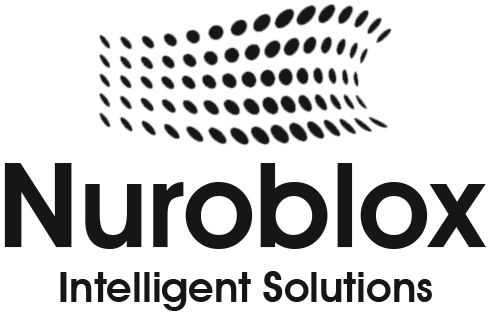How to Implement AI Automation in Your Enterprise
Enterprises today face growing pressure to innovate faster, reduce costs, and deliver better customer experiences. To meet these demands, many are turning to AI-powered automation as a smarter, more adaptable way to streamline operations.
Unlike traditional automation, which follows rigid rules, AI automation can learn, predict, and make decisions, making it ideal for complex, data-heavy processes. From finance to customer service, it’s reshaping how work gets done at scale.
This blog breaks down how your enterprise can effectively adopt AI automation, covering everything from identifying use cases to selecting the right tools and scaling across teams.
What Is Enterprise AI Automation?
Enterprise AI automation refers to the integration of artificial intelligence into business processes to streamline, optimize, and scale operations across an organization. It goes beyond basic rule-based automation (like traditional RPA) by using machine learning, natural language processing, and intelligent decision-making capabilities.
Unlike traditional automation, which follows pre-defined scripts, AI automation can analyze data, learn patterns, and make context-aware decisions. This allows enterprises to automate not just repetitive tasks, but also more complex, dynamic processes that require human-like thinking.
Benefits of AI Automation for Enterprises
AI automation offers more than just efficiency; it provides the intelligence and adaptability modern enterprises need to stay ahead. By integrating AI into core workflows, businesses can unlock powerful advantages across departments and functions.
Improved Efficiency and Speed: AI-powered automation can process tasks much faster than humans, reducing turnaround times and increasing output across teams.
Enhanced Accuracy and Reduced Errors: Machine learning algorithms can detect anomalies, correct inconsistencies, and reduce manual mistakes, especially in data-heavy tasks like finance, compliance, or reporting.
Scalability: AI automation can be deployed across multiple functions HR, IT, customer service, marketing, without needing to scale headcount proportionally.
Cost Savings: By minimizing manual labor, reducing rework, and optimizing resource allocation, enterprises can cut operational costs over time.
Better Customer Experiences: AI-driven chatbots, recommendation systems, and personalization engines allow enterprises to serve customers faster and more effectively.
Key Use Cases Across Departments
AI automation is not limited to one function; it can streamline and elevate processes across nearly every department in an enterprise. Below are some of the most impactful use cases:
1. Customer Service
- AI chatbots and virtual assistants for 24/7 support.
- Sentiment analysis to prioritize and route customer queries.
- Auto-responses for common questions, reducing agent load.
2. Finance & Accounting
- Invoice processing using OCR and ML to extract data from PDFs.
- Expense report validation and approvals.
- Fraud detection based on behavioral and transaction anomalies.
3. Human Resources (HR)
- Resume screening using natural language processing.
- Employee onboarding workflows automated end-to-end.
- HR ticketing systems enhanced with AI to resolve internal queries.
4. IT & Operations
- Predictive maintenance using sensor data and AI forecasting.
- Automated incident detection and resolution (AIOps).
- Workflow orchestration across systems without manual intervention.
5. Marketing & Sales
- Lead scoring and qualification using AI models.
- Personalized content delivery based on user behavior.
- Campaign performance optimization using AI-driven analytics.
6. Supply Chain & Logistics
- Inventory optimization with demand forecasting.
- Route planning using AI for efficiency and cost savings.
- Order processing with fewer delays and better tracking.
These are just a few examples. With the right strategy and tools, AI automation can bring measurable benefits to nearly every part of the enterprise.
Step-by-Step Guide to Implementation
Successfully adapting AI automation in an enterprise isn’t just about choosing the right tool it’s about aligning technology with business needs, people, and processes. Here’s a step-by-step guide to ensure a smooth rollout:
1. Identify High-Impact Opportunities
Start by evaluating business areas with repetitive, rule-based, or data-intensive tasks. Look for processes that are time-consuming, prone to error, or require real-time decision-making.
Examples: invoice processing, employee onboarding, customer support, data entry.
2. Set Clear Business Goals
Define what success looks like, cost savings, faster response times, higher accuracy, improved customer experience, or reduced workload. Having measurable KPIs ensures you’re solving the right problem.
3. Select the Right AI Automation Tools
Choose a platform that aligns with your goals and IT infrastructure. Consider:
- No-code/low-code capabilities
- Integration with existing systems
- Data security and compliance
- Scalability and vendor support
4. Build a Cross-Functional Team
Involve stakeholders from IT, operations, security, and business units. Collaboration ensures smooth implementation and higher adoption across departments.
5. Start with a Pilot Project
Don’t go enterprise-wide from day one. Test a specific use case in a single department to learn, refine, and demonstrate value before scaling.
6. Monitor, Optimize, and Learn
Use data to track performance against KPIs. Tweak models, rules, or workflows as needed. AI improves over time so continuous monitoring and iteration are key.
7. Scale Across the Organization
Once validated, extend AI automation to similar processes or new departments. Create an internal AI center of excellence (CoE) to govern, support, and scale automation efforts.
Best Practices for Long-Term Success
Implementing AI automation is only the beginning ensuring it drives sustained value over time requires the right strategies, culture, and governance. Here are the best practices that leading enterprises follow:
Start Small, Scale Strategically- Begin with high-impact, low-risk use cases. Use pilot projects to validate performance and build confidence before expanding to other business areas.
Align Automation with Business Goals- Make sure AI initiatives support key business outcomes like cost reduction, customer satisfaction, or operational agility not just technology adoption for its own sake.
Foster Cross-Functional Collaboration- Break down silos by involving IT, operations, legal, compliance, and business users from day one. This ensures technical and strategic alignment across departments.
Prioritize Data Quality and Governance- AI automation depends on clean, accurate, and accessible data. Invest in proper data management, labeling, and governance to ensure reliable outcomes.
Maintain a Human-in-the-Loop- Not all decisions should be left to machines. Keep humans involved in reviewing or supervising AI actions especially in critical, ethical, or regulated areas.
Monitor, Measure, and Adapt
Use dashboards and analytics to track success metrics like accuracy, ROI, and user satisfaction. Continuously improve models and workflows based on real-world feedback.
Invest in Change Management- Prepare your teams for the shift. Provide training, encourage a culture of innovation, and address concerns early to boost adoption and morale.
Keep Security and Compliance Front and Center- Ensure all automation follows your industry’s security, privacy, and regulatory standards especially when dealing with sensitive data.
By following these best practices, enterprises can not only implement AI automation successfully but also ensure it evolves and scales with long-term impact.
Conclusion
AI automation is no longer a futuristic idea it’s a powerful business tool that’s transforming how enterprises operate. By combining the speed of automation with the intelligence of AI, organizations can unlock new levels of efficiency, accuracy, and innovation.
However, success doesn’t come from technology alone. It requires a clear strategy, the right tools, cross-functional collaboration, and a focus on continuous improvement. Whether you’re just starting or scaling across departments, taking a thoughtful, step-by-step approach will ensure lasting impact.
With the right mindset and implementation plan, AI automation can help your enterprise work smarter, move faster, and lead with confidence.


